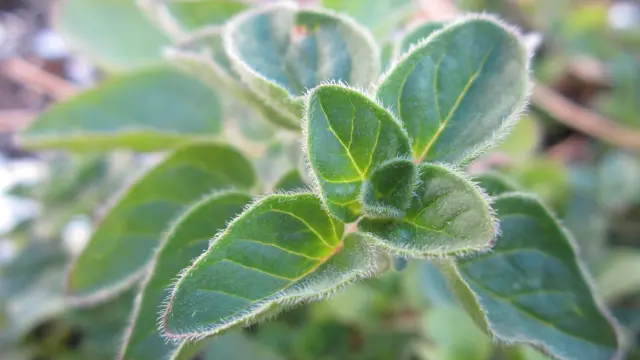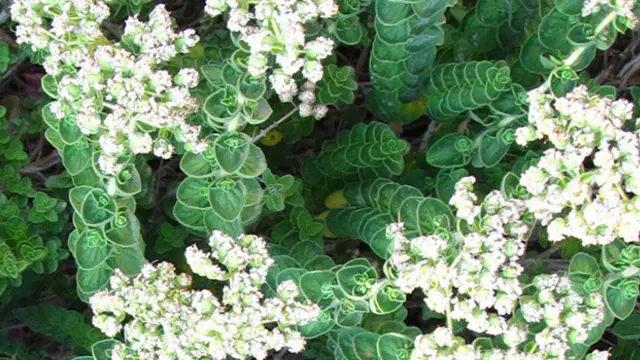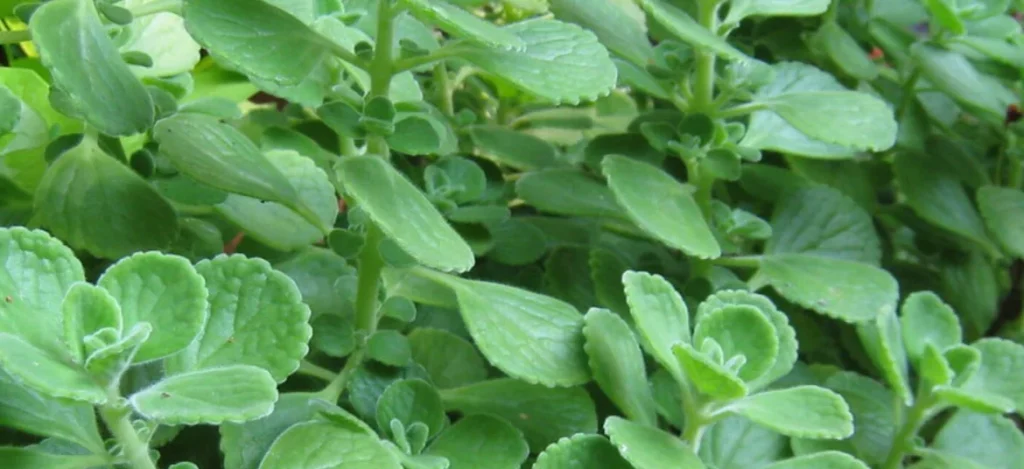How to make oregano tea
Ingredients:
To make oregano tea, you can use either fresh or dried oregano and steep it in hot water.
Oregano tea can be made in approximately 5 minutes. This herbal tea is a cozy drink that may provide relief and nutritional benefits.
- 1 or 2 sprigs of fresh oregano, or 2 teaspoons of dried oregano
- 1 1/2 cups of water
- Optional: honey, lemon, lime, or orange slice to taste
Instructions:
- Boil water in a saucepan or tea kettle.
- If using fresh oregano, wash the sprigs or leaves. Place them in a mug and lightly mash the leaves to release their oils. If using dried oregano, place it in a tea strainer or tea bag and put it in a cup.
- Pour boiling water over the oregano.
- Let the tea steep for 2 to 5 minutes. Steeping it longer will result in a more intense flavor, but oregano has a bitter taste.
- Remove the oregano leaves with a tea strainer, in a cup..
- Add honey or a slice of lemon or orange to taste, if desired, and stir.
Oregano tea benefits
What is oregano? as you might have heard,it is a culinary herb that offers a distinctive flavor and aroma to foods. With its zesty, slightly bitter and minty notes, oregano has become a staple in various global cuisines. From pizza and pasta dishes to meat, vegetables and more, oregano can enhance the taste and even provide potential health benefits.
This comprehensive guide will explore all aspects of oregano – its history, varieties, culinary uses, nutrition facts, health benefits, how to grow it, and ways to cook with this aromatic herb. Read on to learn everything you need to know about oregano!
Key takeaways
- Versatility and Preparation Options
- Oregano can be used in multiple forms: fresh, dried, as tea, or preserved.
- The herb can be preserved in six different ways (drying, freezing, oil infusion, pesto, vinegar infusion, and salt/sugar mix).
- Each variety (Mediterranean, Greek, Italian, Mexican, and Turkish) offers unique flavor profiles for different culinary applications.
2. Significant Health Benefits with Important Precautions.
- Rich in antioxidants and antimicrobial properties.
- Offers eight major health benefits, including anti-inflammatory effects and digestive support.
- However, comes with potential side effects that require careful consideration, especially for those on medications or during pregnancy
Nutrition Facts and Health Benefits of Oregano
Here is the nutrition profile of 1 teaspoon (0.6 grams) of dried oregano according to the United States Department of Agriculture:
| Nutrition Facts | |
|---|---|
| Serving Size: 1 tablespoon (2g) | |
| Calories | 6 |
% Daily Value* |
|
| Total Fat | 0.1g 0% |
| Cholesterol | 0mg 0% |
| Sodium | 1mg 0% |
| Total Carbohydrates | 1.2g 0% |
| Dietary Fiber | 0.8g 3% |
| Sugars | 0g |
| Protein | 0.2g |
| Vitamin A | 2% DV |
| Vitamin C | 3% DV |
| Calcium | 8% DV |
| Iron | 9% DV |
| * Percent Daily Values are based on a 2,000 calorie diet. | |
Packed with antioxidants and antimicrobial components, oregano offers some great health perks along with its bold, appetizing flavor.
Potential Health Benefits
Several lab studies indicate oregano has beneficial bioactive compounds that may:
- Fight inflammation: Carvacrol and rosmarinic acid in oregano display anti-inflammatory activity useful for treating arthritis, pain and swelling.
- Boost immunity: With antimicrobial and antioxidant effects, oregano oils can strengthen the immune response and prevent infections.
- Support digestion: Oregano stimulates bile flow to improve digestion. Its oils relieve bloating, gut spasms and gas.
- Lower cholesterol: Some research notes oregano extract helps reduce LDL cholesterol and prevent fat accumulation in the liver.
However, most studies have tested concentrated oregano extracts on cells. More human studies are needed to confirm these preliminary health benefits. But so far, early results seem promising!
How many varieties of oregano
here are over 50 species of oregano available. But for culinary purposes, Greek oregano, common oregano, and Italian oregano are more widely used.
Oregano is a widely used herb in various cuisines around the world, primarily known for its robust flavor and versatility. The most commonly used types of oregano include.
5 Common Varieties of Oregano
- Mediterranean Oregano (Origanum vulgare)
- Greek Oregano (Origanum vulgare subsp. hirtum)
- Italian Oregano (a hybrid of Origanum vulgare and marjoram)
- Mexican Oregano (Lippia graveolens)
- Turkish Oregano (Origanum onites)
Mediterranean Oregano (Origanum vulgare)
This is the most prevalent variety, often referred to simply as oregano. It is a key ingredient in Mediterranean cuisine, especially Italian and Greek dishes, where it enhances flavors in sauces, meats, and salads. The flavor is aromatic with a slightly peppery taste
Greek Oregano (Origanum vulgare subsp. hirtum)

A specific subspecies of Mediterranean oregano, Greek oregano is known for its strong flavor and is frequently used in Greek cooking, particularly in dishes like Greek salad and grilled meats
Worldwide Oregano Production (2014-2023)
| Year | Turkey | Mexico | Greece | Morocco | Peru |
|---|---|---|---|---|---|
| 2023 | 14,500 | 12,800 | 8,200 | 6,500 | 5,800 |
| 2022 | 14,200 | 12,500 | 8,000 | 6,300 | 5,600 |
| 2021 | 13,800 | 12,200 | 7,800 | 6,100 | 5,400 |
| 2020 | 13,500 | 11,900 | 7,600 | 5,900 | 5,200 |
| 2019 | 13,200 | 11,600 | 7,400 | 5,700 | 5,000 |
| 2018 | 12,800 | 11,300 | 7,200 | 5,500 | 4,800 |
| 2017 | 12,500 | 11,000 | 7,000 | 5,300 | 4,600 |
| 2016 | 12,200 | 10,700 | 6,800 | 5,100 | 4,400 |
| 2015 | 11,900 | 10,400 | 6,600 | 4,900 | 4,200 |
| 2014 | 11,600 | 10,100 | 6,400 | 4,700 | 4,000 |
Italian Oregano (a hybrid of Origanum vulgare and marjoram)

This variety combines the flavors of both oregano and marjoram, making it popular in Italian cuisine for pasta sauces and pizza
Mexican Oregano (Lippia graveolens)

Although not botanically an oregano, this variety has a flavor profile that complements Mexican and Southwestern U.S. dishes like chili con carne. It is stronger and more citrusy than Mediterranean oregano
Turkish Oregano (Origanum onites)

Used extensively in Turkish cuisine, this type has a slightly different flavor but shares culinary applications similar to Mediterranean oregano
8 Health Benefits of Oregano
Oregano is not only a popular culinary herb but also offers various health benefits attributed to its rich nutrient profile and bioactive compounds. Here are some of the notable health benefits of oregano:
Health Benefits of Oregano
- Antioxidant Properties.
Oregano is rich in antioxidants, which help combat oxidative stress in the body. The presence of compounds like carvacrol and thymol contributes to its ability to neutralize free radicals, potentially reducing the risk of chronic diseases. - Anti-inflammatory Effects.
The anti-inflammatory properties of oregano may help alleviate symptoms associated with inflammatory conditions. This can be beneficial for conditions such as arthritis and other inflammatory . - Antimicrobial Activity.
Oregano has demonstrated antimicrobial effects against various bacteria and fungi, making it useful in fighting infections. It may be effective against pathogens responsible for respiratory infections, skin conditions, and gastrointestinal issues. - Digestive Health.
Oregano may aid digestion by increasing bile flow, which is essential for fat digestion. It can also help relieve symptoms of bloating and indigestion. - Respiratory Benefits.
The herb is often used as a natural remedy for coughs and respiratory issues, such as asthma and bronchitis, due to its potential to soothe the throat and reduce mucus production. - Nutrient-Rich.
Oregano provides various essential nutrients, including vitamins A, C, E, K, and several B vitamins, as well as minerals like calcium, magnesium, and iron. These nutrients support overall health and immune function. - Potential Blood Sugar Regulation.
Some studies suggest that oregano may help lower blood sugar levels, which could be beneficial for individuals with diabetes or those at risk of developing the condition. - Skin Health.
Due to its antimicrobial properties, oregano oil is sometimes used topically to treat skin conditions such as acne and fungal infections.
Considerations:
While oregano is generally safe when used in cooking or as a supplement, it may cause mild side effects in some individuals, including stomach upset or allergic reactions, particularly in those sensitive to plants in the mint family.
Additionally, people on blood-thinning medications should consult a healthcare provider before using oregano supplements due to potential interaction.
8. Potential side effects of oregano

Consuming oregano, particularly in high doses or concentrated forms like oregano oil, can lead to several potential side effects. Here are the main concerns associated with regular consumption of oregano:
Potential Side Effects of Oregano are:
- Digestive Irritation
- Allergic Reactions
- Hormonal Effects
- Interactions with Medications
- Bleeding Risks
- Skin Irritation
- Potential Liver Toxicity
- Pregnancy and Breastfeeding Concerns.
Now let’s dive into the 8. Potential side effects of oregano:
Digestive Irritation:
Oregano, especially in oil form, can irritate the digestive tract, leading to symptoms such as heartburn, stomach pain, nausea, and diarrhea. This is often due to the high concentration of active compounds like carvacrol and thymol.
Allergic Reactions:
Some individuals may experience allergic reactions to oregano, particularly those allergic to other plants in the Lamiaceae family (e.g., mint, basil). Reactions can range from mild skin irritations to more severe symptoms like swelling and difficulty breathing.
Hormonal Effects:
Oregano oil may influence hormone levels, which could potentially disrupt menstrual cycles in women or affect hormonal balance. This effect is not common but should be considered, especially for those with existing hormonal issues.
Interactions with Medications:
Oregano can interact with certain medications, particularly blood thinners such as warfarin. Its anticoagulant properties may increase the risk of bleeding, making it crucial for individuals on such medications to consult a healthcare provider before using oregano supplements
Bleeding Risks:
Due to its potential effects on blood clotting, oregano should be used cautiously by individuals with bleeding disorders or those undergoing surgery. It is recommended to discontinue use at least two weeks prior to any surgical procedures.
Skin Irritation:
When applied topically in high concentrations, oregano oil can cause skin irritation or allergic contact dermatitis.
Potential Liver Toxicity:
Although rare, there have been reports linking excessive consumption of oregano (especially in supplement form) to liver toxicity. This highlights the importance of moderation and caution when using herbal supplements.
Pregnancy and Breastfeeding Concerns
Due to its antimicrobial properties, oregano oil is sometimes used topically to treat skin conditions such as acne and fungal infections
How to preserve oregano

Preserving oregano is a great way to enjoy its flavor year-round. There are several methods to preserve oregano, depending on how you plan to use it. Here are the most common techniques:
6 Ways to preserve oregano
- Drying Oregano
- Freezing Oregano
- Preserving Oregano in Oil
- Making Oregano Pesto
- Preserving Oregano in Vinegar
- Oregano Salt or Sugar.
Now let’s get into how to preserve oregano.
A. Drying Oregano
Air Drying:
Harvest: Cut oregano stems in the morning after the dew has dried but before the sun gets too hot.
Bundle: Tie 5-10 stems together with string or a rubber band.
Hang: Hang the bundles upside down in a warm, dry, and well-ventilated area away from direct sunlight.
Dry: Allow the oregano to dry for 1-2 weeks until the leaves are crisp and crumble easily.
Storage: Remove the leaves from the stems and store them in an airtight container in a cool, dark place.
Oven Drying: Preheat your oven to the lowest setting (around 170°F or 75°C).
Spread oregano leaves in a single layer on a baking sheet.
Dry in the oven for 1-2 hours, checking frequently to prevent burning.
Store in an airtight container once completely dry.
Dehydrator: Spread oregano leaves on the dehydrator trays.
Set the dehydrator to 95°F (35°C) and dry for 1-2 hours.
Store in an airtight container.
B. Freezing Oregano:
Freezing Leaves:
Wash and dry the oregano leaves thoroughly.
Place the leaves in a single layer on a baking sheet and freeze for 1-2 hours.
Transfer the frozen leaves to a freezer-safe bag or container. Use directly from the freezer in cooked dishes.
Freezing in Oil:
Chop fresh oregano leaves and place them in ice cube trays.
Fill each compartment with olive oil or water.
Freeze until solid, then transfer the cubes to a freezer-safe bag. Use in soups, stews, or sauces.
C. Preserving Oregano in Oil.
Ingredients:
2 cups fresh oregano leaves
1/2 cup olive oil
1/4 cup nuts (pine nuts, walnuts, or almonds)
2 garlic cloves
1/2 cup grated Parmesan cheese (optional)
Salt and pepper to taste
Instructions:
Blend oregano, nuts, and garlic in a food processor until finely chopped.
Gradually add olive oil while blending until smooth.
Stir in Parmesan cheese (if using) and season with salt and pepper.
Store in an airtight container in the refrigerator for up to a week or freeze in ice cube trays for longer storage.
D. Making Oregano Pesto
Pesto is a delicious way to preserve oregano and use it in various dishes.
Ingredients:
2 cups fresh oregano leaves
1/2 cup olive oil
1/4 cup nuts (pine nuts, walnuts, or almonds)
2 garlic cloves
1/2 cup grated Parmesan cheese (optional)
Salt and pepper to taste
Instructions:
Blend oregano, nuts, and garlic in a food processor until finely chopped.
Gradually add olive oil while blending until smooth.
Stir in Parmesan cheese (if using) and season with salt and pepper.
Store in an airtight container in the refrigerator for up to a week or freeze in ice cube trays for longer storage.
E. Preserving Oregano in Vinegar
Oregano-infused vinegar adds flavor to salads, marinades, and more.
Instructions:
Wash and dry oregano sprigs.
Place the sprigs in a clean, sterilized jar.
Heat vinegar (white wine, apple cider, or red wine vinegar) until warm but not boiling.
Pour the warm vinegar over the oregano, ensuring the sprigs are fully submerged.
Seal the jar and store in a cool, dark place for 2-3 weeks.
Strain out the oregano and transfer the infused vinegar to a clean bottle.
F. Oregano Salt or Sugar
Infuse salt or sugar with oregano for a unique seasoning.
Instructions:
Mix dried oregano leaves with coarse salt or sugar in a 1:4 ratio (1 part oregano to 4 parts salt or sugar).
Store in an airtight container and use as a seasoning for savory or sweet dishes.
Tips for Preserving Oregano
Harvest at the right time: Pick oregano just before it flowers for the best flavor.
Wash thoroughly: Rinse the leaves to remove dirt and insects, then pat them dry completely.
Label and date: Always label your preserved oregano with the date to keep track of freshness.
Conclusion
Oregano stands out as a versatile herb that offers both culinary excellence and significant health benefits.
From its various varieties grown worldwide to its impressive nutritional profile and preservation methods, oregano continues to be a valuable addition to both kitchens and natural medicine cabinets.
While the herb offers numerous health advantages, including antioxidant and antimicrobial properties, it’s important to be aware of potential side effects and use it responsibly.
Whether you’re brewing it as a tea, using it in cooking, or preserving it for future use, oregano’s rich flavor and therapeutic properties make it an indispensable herb worth incorporating into your daily routine.
As research continues to unveil more benefits of this remarkable herb, its popularity and applications are likely to expand further, cementing its place as one of nature’s most valuable botanical treasures.
Frequently Asked Questions
How do you make oregano tea?
Steep 1-2 teaspoons of dried oregano or a handful of fresh leaves in boiling water for 5-10 minutes, strain, and optionally add honey or lemon for taste.
What are the main varieties of oregano?
The five main varieties are Mediterranean, Greek, Italian, Mexican, and Turkish oregano, each with distinctive flavors and culinary uses.
What are the key health benefits of oregano?
Oregano offers antioxidant, anti-inflammatory, and antimicrobial properties, supports digestive health, and may help with respiratory issues and blood sugar regulation.
What are the potential side effects of oregano?
Key side effects can include digestive irritation, allergic reactions, hormonal effects, medication interactions, and potential risks during pregnancy and breastfeeding.
How can oregano be preserved?
Oregano can be preserved through drying, freezing, infusing in oil or vinegar, making pesto, or creating oregano-infused salt or sugar.
Refferences
- https://www.mccormickscienceinstitute.com/resources/culinary-spices/herbs-spices/oregano
- https://bluepetalnz.com/blog/f/oregano-culinary-and-medicinal-uses
- https://www.foodandwine.com/seasonings/herbs/oregano/oregano-recipes
- https://www.theharvestkitchen.com/herbal-oregano-tea/
- https://www.teajoy.com/articles/oregano-tea-recipe
- https://muybuenoblog.com/oregano-tea/
Contents
- 1 How to make oregano tea
- 1.1 Oregano tea benefits
- 1.2 Key takeaways
- 1.3 Nutrition Facts and Health Benefits of Oregano
- 1.4 Potential Health Benefits
- 1.5 How many varieties of oregano
- 1.6 Mediterranean Oregano (Origanum vulgare)
- 1.7 Greek Oregano (Origanum vulgare subsp. hirtum)
- 1.8 Worldwide Oregano Production (2014-2023)
- 1.9 Italian Oregano (a hybrid of Origanum vulgare and marjoram)
- 1.10 Mexican Oregano (Lippia graveolens)
- 1.11 Turkish Oregano (Origanum onites)
- 1.12 8 Health Benefits of Oregano
- 1.13 8. Potential side effects of oregano
- 1.14 Potential Side Effects of Oregano are:
- 1.15 How to preserve oregano
- 1.16 Conclusion
- 1.17 Frequently Asked Questions
- 1.18 How do you make oregano tea?
- 1.19 What are the main varieties of oregano?
- 1.20 What are the key health benefits of oregano?
- 1.21 What are the potential side effects of oregano?
- 1.22 How can oregano be preserved?
- 1.23 Refferences


